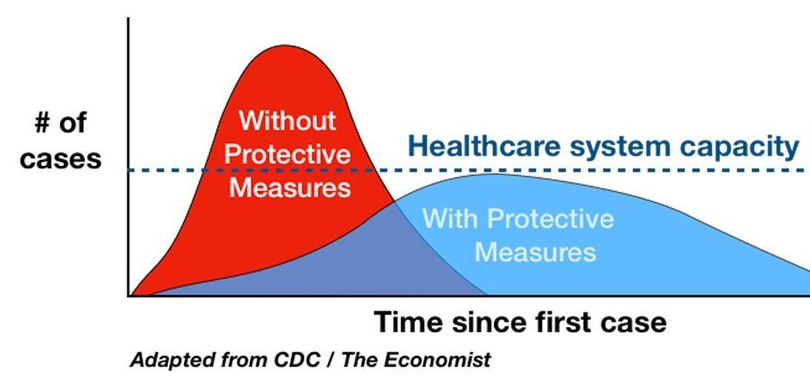Ruptures in a relationship are a normal part of life. Skillful repair requires both partners to work together for the good of the relationship. The method that I prefer is based on Terry Real‘s work, and is documented with lots of examples in chapters six and seven of The New Rules of Marriage. This formal repair process isn’t necessary for all of the little bumps in the road. Where this tool is useful is when there’s been a significant rupture.
Let’s use Alice and Bob, a fictional couple, as an example. Say Alice feels hurt by something Bob did or said. It’s Alice’s job to initiate repair. She shares with her partner how she feels hurt and what she would like to be different in the future. Alice’s aim is to teach Bob how to give her what she needs, and to help him succeed. Her aim is not to unload on Bob and tell him what an awful person he is.
Asking for what you want
Both parties must be receptive for repair to be effective, because they both have to give a little, putting aside individual egos in service of the relationship. So Alice checks to see if Bob is in a good place for a difficult conversation: “Bob, I’ve got some feedback that I’d like to share with you. Is this a good time?” If Bob is feeling centered and can put up his boundaries and listen in a healthy way, he’ll reply, “Yes.” Otherwise he should let Alice know that he’s not ready and propose another time.
When Bob is ready, Alice’s next step is to take a breath and remember that she loves Bob. When we’re feeling hurt, it’s often difficult to be measured in our words, so taking this step to remember love is crucial.
Now Alice takes four steps to explain herself, briefly, to her partner. She speaks from her own experience, uses “I” phrases, and owns her own thoughts and feelings. Preferably keep each of these to a single sentence. Allowing this to turn into a lecture will defeat the purpose.
- What I saw and heard.
- What I made up about that.
- What I felt about that.
- What I would like in the future.
When saying what she saw, Alice imagines what a video camera might have captured; this will have the highest likelihood of matching Bob’s experience. She avoids exaggerating and embellishing.
When saying what she thought about it, she’d be wise to say, “What I made up about that was,” which leaves lots of room for other interpretations. This is where Alice stays in her lane, owning her own thoughts, and allows that Bob might have other thoughts about what happened.
When saying what she felt, Alice speaks from the first person, “I felt ____”. It’s tempting to blame our feelings on others and use phrases like, “You made me feel ____”. Avoid using “made/makes me feel” here. Own your own feelings, because your experience is uniquely your own, and many of the feelings you are having likely have more to do with you than with your partner.
When Alice says what she’d like in the future, she’s coaching her partner on how he can succeed. She’s rooting for the relationship. “In the future, I’d prefer it if you would…”
There’s one final step in all of this – Alice lets go of the outcome. She knows she won’t always get what she wants. She knows that she doesn’t control Bob, and that it’s up to him to give whatever he can give.
This is not easy. But it works much better than most typical strategies of trying to control your partner, yelling, screaming, nagging, withdrawing, being passive/aggressive, and so on. The more I practice this, the more natural it feels.
Listening without being defensive
What’s Bob doing during all of this? He’s listening to understand. He’s putting aside his own thoughts and feelings, and being fully receptive to what Alice has to say. He knows that repair is a one way process. It’s not his turn to talk about what he thinks or how he feels; if he has something to share, he can do that at another time. This is Alice’s time, and he gives her that gift because he values the relationship.
When Alice talks about what she saw and heard, if she’s skillful, Bob won’t find much to disagree with here. It’s when she moves into what she thought and felt that Bob will have to hold a strong boundary. If Bob pays attention, he will get a better understanding of Alice’s thought process and how she feels about things. It’s critical that Bob spends this time listening to Alice instead of focusing on building his own defense. Otherwise he’ll miss out on some important learning. And though Bob may disagree with much of Alice’s reasoning, there’s almost always a seed of truth in there. As a skillful listener, Bob is looking for those seeds. This is the most difficult part, and it’s where Bob’s internal boundary really matters. Bob listens and pays attention to what Alice’s story is, and he doesn’t have feelings about anything that is not true for him. He knows that this is about Alice, not about him.
When Alice talks about how she felt, this is Bob’s chance to be empathic. Since Bob has heard the story in Alice’s head (what she made up), he’s much more likely to understand her feelings. He’d probably feel something similar if he had that same story in his head. If Bob listens empathically here, he’s likely to soften up and feel compassion for Alice.
Giving what you can
When Alice asks for what she wants in the future, Bob will listen to see what he can give. Often what Alice will ask for will be easy for Bob to give, sometimes not so much.
Once Alice is done speaking, Bob gets a chance to ask questions, to be curious about what he heard. It’s important to focus on understanding, and not being defensive. This helps Alice feel like she’s really understood, and it helps Bob get a better understanding of where Alice is coming from, and how she arrived at the story that’s playing in her head.
Now it’s time for Bob to step up and say what he’s willing to give. If he’s skillful, he’ll give as much as he possibly can without overcommitting himself. Making a promise you don’t intend to keep is a recipe for disaster.
Resources
This article is a brief summary of an effective repair process. For further study, I recommend Terry’s book, The New Rules of Marriage. Terry offers a 2-day Relationship Boot Camp from time to time, but if you don’t want to travel, you can watch an online course which covers a subset of the material called Staying in Love. Mari and I have read the book and taken the online course, and we’ve found both to be great resources.
And once again, remember that this is not just about marriage – repair is a critical tool in any relationship. An intimate relationship such as marriage is the most difficult place to be skillful, because the stakes are so high. And so are the rewards!

 named Courtney spotted her, and, outraged, began a one-person picket line in front of Katie’s table. Listen to the episode if you’d like to hear what transpired, but suffice it to say, Courtney found herself so outraged that she ended up calling Katie names and flipping her the bird. All Katie had to do was film Courtney doing all of this, which enraged Courtney further.
named Courtney spotted her, and, outraged, began a one-person picket line in front of Katie’s table. Listen to the episode if you’d like to hear what transpired, but suffice it to say, Courtney found herself so outraged that she ended up calling Katie names and flipping her the bird. All Katie had to do was film Courtney doing all of this, which enraged Courtney further.